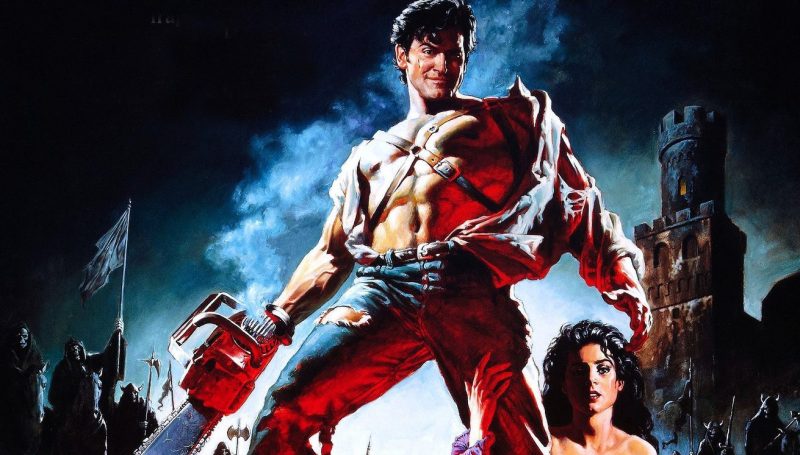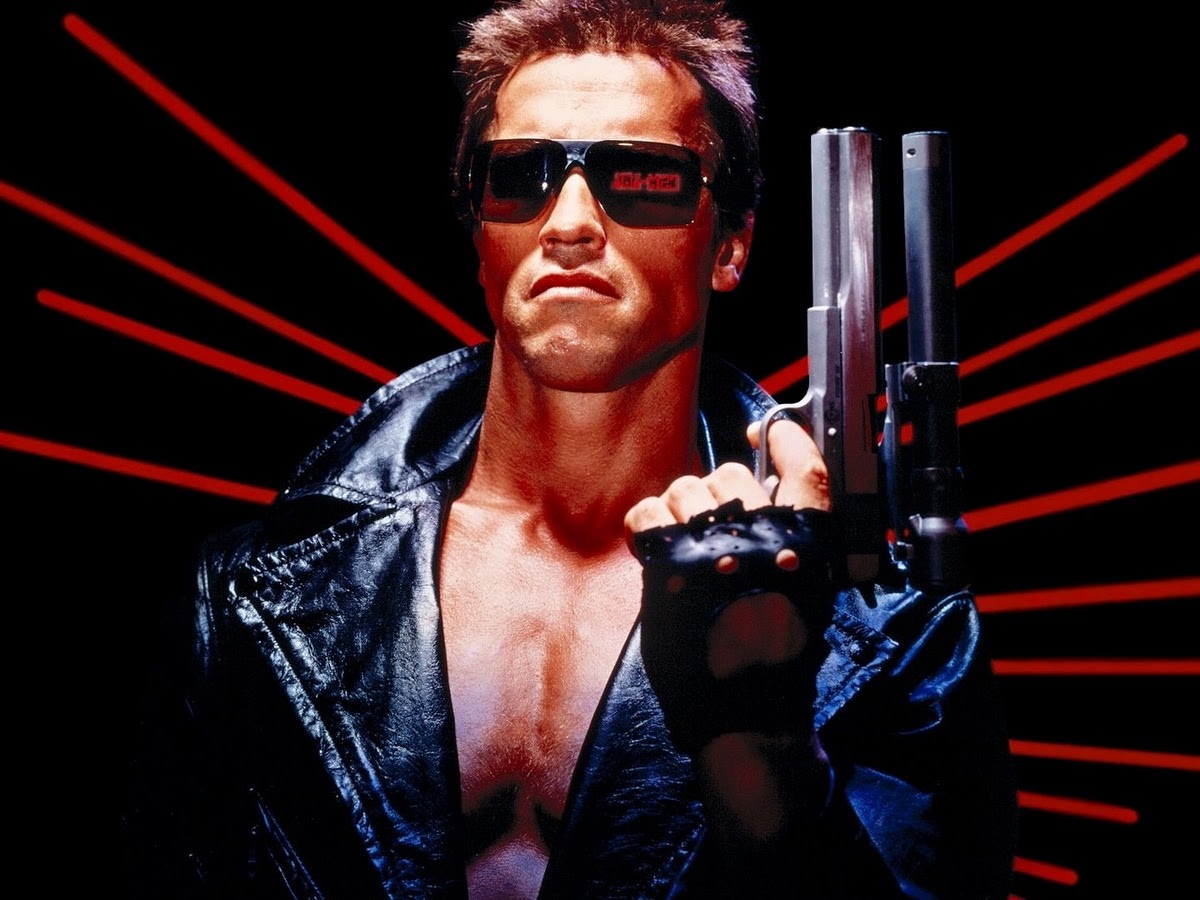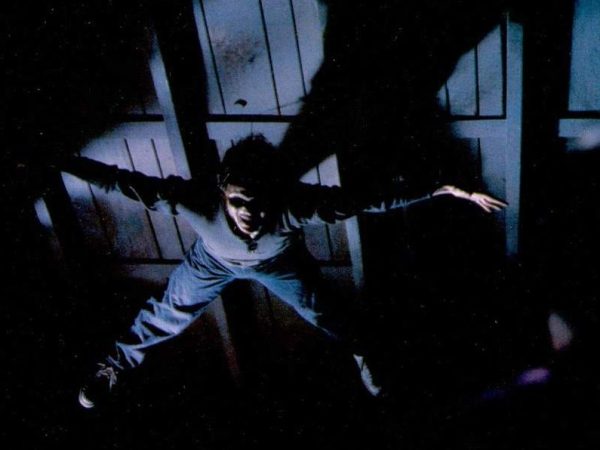
Can a cherished underdog story really survive the inevitable sequel? VHS Revival investigates
Sequels can be a tricky prospect creatively. This is particularly true for movies that are planned as standalone features, only to be thrust back into the spotlight care of popular demand. The Karate Kid was one of those movies. In the summer of 1984, Rocky director John G. Avildsen’s latest commercial smash was a similar underdog story, a relatively low-key release that tapped into the early 80s karate craze, wowing audiences and critics alike with its surprising level of depth and relatability. The story of a fatherless teen who finds balance thanks to a wizened pacifist with a very particular set of skills, The Karate Kid introduced us to the pugnacious charms of Ralph Macchio, but it was Pat Morita‘s Mr Miyagi who won the hearts of a generation. So impressed with Morita’s performance was legendary film critic Roger Ebert that he predicted an Oscar nomination for the silver screen rookie. This would inspire a moment of smug derision from fellow critic Gene Siskel, who saw The Karate Kid as a movie that was steeped in stereotypes, scoffing at the notion that Morita could be nominated for anything. In the end, Ebert’s prediction came true, Morita claimed his well-deserved nomination, and The Karate Kid smashed all expectations, becoming the top rental of 1985. This was one underdog story which happened to mirror reality.
The Karate Kid resonated with audiences to such an extent that preparations for a sequel began almost immediately. For producers, it’s simply a case of if something’s successful, let’s make more of it. You’re pretty much guaranteed butts in seats based on the first film’s success, so getting your main players back on board is the primary goal. By the time The Karate Kid Part II was ready for release, Hollywood’s latest hit franchise had already caught the cultural marketing bug. The summertime clamour for a high-kicking return was punctuated by the movie’s venture into the commercial raison d’etre of late 20th century filmmaking. As well as inspiring a brand new toy range, the movie would give us the prerequisite MTV tie-in at a time when movies and pop music had become inseparable, Peter Cetera’s hit single ‘The Glory of Love’ reaching number 1 on the Billboard Hot 100 and earning the franchise its second Oscar Nomination, this time for Best Original Song. Throughout the summer of 1986, the accompanying music video would dominate MTV programming, clips from the movie teasing us with a new romance, exotic settings, and the kind of fictional reunion fans couldn’t wait to experience.
This was great news for the honchos over at Columbia TriStar, who’d stumbled onto a veritable goldmine with their revelatory sleeper hit. The Karate Kid Part II raked in an incredible $115,100,000 on a budget of only $13,000,000, but the movie’s characters had suddenly evolved from plucky underdogs to flavour of the month celebrities, from having no expectation to having all the expectation in the world. Macchio, now 25, had become the boyish dreamboat of a million teenage bedrooms, his puppy dog aura plastered on the cover of pop music magazines as our against-all-odds hero prepared for his second outing as cinema’s most unlikely ass kicker. Kids identified with The Karate Kid‘s themes of teenage alienation, the same that cheeky rapscallion Macchio effortlessly embodied. Larusso’s story was idealistic, yet relatable. He was an outsider, a victim who we expected very little of, who we stood with every tenuous step of the way, but now the pressure was on to deliver.
Because, Daniel-san, for person with no forgiveness in heart, living even worse punishment than death.
Mr. Miyagi
As enjoyable as the original Miyagi/Larusso relationship arc was, giving audiences the sequel they craved was always going to be problematic creatively. The idea of bigger is better seemed to go against everything the original movie and its characters stood for, a familiar extension of our lead duo’s magical journey almost certain to underwhelm. This wasn’t a science fiction movie we were dealing with, so piling on the special effects was a no-go, and with the merchandise machine working overtime, expectations were understandably high. So what do you do with a low-key tale that has seemingly reached its dramatic zenith? How would Larusso and Miyagi’s whirlwind friendship maintain its lofty heights now that the great man had revealed his greatness?

In such a situation, it’s easy to find a geographical solution to a creative problem. That’s exactly what Avildsen did, but due to Miyagi’s Japanese heritage, it actually made sense from a narrative perspective. As with all personal highs, there are resultant lows, and for Daniel, returning to school after the summer of a lifetime would have been like returning to your job in a local supermarket after a luxurious vacation in paradise. Though some stories are better left untold, there was an appeal to seeing Miyagi on home turf, to experiencing the traditions that made him such an engaging character first-hand.
The Karate Kid Part II begins a little uncertainly. Part of this is due to the fact that the film’s California-based opening — one that sees Miyagi teach the maniacal Kreese a lesson after watching him attack his own students — was actually meant as the final scene in the original movie, but wasn’t shot and used until the sequel. It’s an effective scene, one which stresses the point that Daniel must stay grounded after his All Valley triumph, a watching Miyagi suggesting early retirement and looking rather perturbed as his student signs autographs for waiting fans ― a development that no doubt reflected reality for Macchio. Those initial scenes seem a little forced, relying a little too heavily on quickfire exposition, but Avildsen had his reasons.
The main purpose of those opening scenes is to tie up loose ends and say goodbye to life in California. Johnny and his crew of ex-Cobra Kais have learnt their lesson, so a simple re-tread with Kreese as the movie’s antagonist would surely have proven anticlimactic, particularly since Daniel’s whole reason for finding balance in the first place is no longer a part of the plan. It’s a shame we didn’t get to see more of Cobrai Kai’s initial band of rebels during the original trilogy because they were classic 80s bad guys and are absolutely central to the original film’s cult legacy. Luckily, we’ve been treated to the excellent TV spin-off Cobra Kai, which picks up on events decades later, reigniting Daniel and Johnny’s rivalry well into middle age and flipping the script by making the latter the sympathetic character. The fact that Johnny and the Cobra Kai brand are central to the show’s formula should tell you everything you need to know about their importance to the Karate Kid franchise.
Johnny’s newfound respect for his former foe ended all hopes of an immediate Cobra Kai resurgence, but the absence of sweetheart Ali is particularly jarring, almost serving to cheapen Daniel’s initial achievements. Sure, teenage love is fickle, but her departure is so sudden and painted-over it makes you wonder if a sequel was necessary for anything other than financial reasons. Ali is wiped from history so abruptly that you kind of feel betrayed. They even forewent a proposed scene depicting the couples’ break-up and filled in the blanks with hasty, tacked-on dialogue. The idea that Ali ran off with a football player damaged the character’s integrity. To add to the treachery, she even managed to wreck Mr. Miyagi’s precious, banana yellow 1948 Ford Super De Luxe (a car that a real-life Macchio still owns). In reality, actress Elisabeth Shue had just been accepted into Harvard and couldn’t return for the sequel. Surely it would have made more sense to have Ali move to another state having left for college? It was such a natural progression given the actor’s real-life circumstances, and Daniel could have empathised having left New Jersey in much the same way. Overall, quite the inauspicious start.

The movie’s second scene back at Miyagi’s garden retreat is all exposition, an overabundance of faux-mystical philosophies bordering on overkill. In the original movie, Miyagi taught his student balance through trite, yet effective life lessons. Here, everything has a philosophy attached to it. It reminded me of a scene from an early episode of The Simpsons in which Bart quickly becomes bored with his karate class and asks if he can use the bathroom. “You can if you believe you can,” his sensei glibly replies, and, for the opening sequence at least, Miyagi’s dialogue threatens to slip over the line into self-parody. But then an unexpected letter changes everything, and we soon realise that all is not lost.
That letter has been sent from Miyagi’s native Okinawa, informing him that his father is sick. Here we discover that Miyagi is the subject of much personal conflict going back decades (a fact hinted at in the first movie during a scene with a drunken Miyagi that producers fought to have cut). Upon recieving this news, the tower of strength who showed only glimpses of weakness in the first movie crumbles in a reflective heap, and in that moment we realise that Avildsen has gone the only way he could by focusing on the true star of the show. Despite Macchio being the commercial poster boy for excited kids the world over, and with Daniel in tow for emotional support, The Karate Kid Part II is Miyagi’s story.
When the movie focuses on Miyagi, an essence of that former magic returns. In The Karate Kid he was dependable and quietly supportive, but a return to his motherland reveals the naïve boy who left for America many years before. Interestingly, Morita was the real-life son of a migrant fruit picker, spending time in an internment camp along with 110,000 Americans of Japanese heritage following the conflict at Pearl Harbour, so he understood what it was like to be a fish out of water at a very early age, often wondering what life would have been like on native shores. This no doubt added to the actor’s emotional investment in the role, and Morita puts in yet another Oscar-worthy performance, toiling with the regret of what could have been had fate determined a different path for Miyagi.
While the majority of the movie is shot in Hawaii, not Okinawa as the screenplay suggests, the action is beautifully staged ― you can certainly see where the extra $3,000,000 went. Cinematographer James Crabe gave us a few memorable compositions in the original movie, which soaks up the California shoreline to the sweeping sounds of Bill Conti’s iconic score, but the lush palms of Hawaii and its tumultuous climate are made for the camera, and McCrabe absolutely devours the landscape, delivering a celluloid treat of watercolor extravagance. It’s visually stunning at times, an endearingly nostalgic Miyagi becoming an extension of his evocative surroundings, or, more accurately, the evocative surroundings becoming an extension of Miyagi and our expectations of him as a mystical figure.

Ultimately, that’s where the improvements end, though a welcome romance with tropical beauty Kumiko (Tamlyn Tomita), whose ancient customs provide enough of an obstacle for Daniel’s growing maturity, is beautifully realised, delivered with a fairy tale relish that only adds to the movie’s sense of mystique. Crucially, Miyagi is allowed a romance too, rekindling his relationship with an old flame who he was forced to walk away from in typically honourable fashion. Here, Miyagi’s human side is further explored. The Karate Kid drew parallels between teacher and student, both characters strangers in a strange land in their shared environment on Western shores. Here, yet more commonalities surface, the evocation of a teenage Miyagi something Daniel can relate to more directly.
As much as Avildsen attempts to distance himself from the original movie aesthetically, thematically it’s all very much the same where Daniel is concerned. Once again our plucky youngster is forced into battle, and once again Miyagi will train him, though the wax on, wax off subtleties are replaced by a series of elegant, yet rushed sequences that leave Daniel’s journey feeling less earned this time around. Miyagi’s personal issues aside, The Karate Kid Part II gives us a play-by-play rehash of the original movie with that touch of added bravado inherent in sequels, the sight of LaRusso chopping through several blocks of ice perhaps a little too far beyond the realms of plausibility. It’s one thing overcoming the odds using the very basics, but to tread superhuman territory only months later is very much a symptom of sequalitis. It’s still a fist-pumping scene, an absolute knock-out through a child’s eyes, so it’s difficult to criticise. It made perfect sense from a commercial standpoint.
This time the bad guy is a local karate thug named Chozen (Yuji Okumoto), the nephew of Miyagi’s former friend and rival, whose fight-to-the-death philosophies are soon delivered vicariously. Okumoto gives a wonderfully conceited performance as Chozen, a character whose cowardice will ultimately be rejected by everyone. Not that he fully deserves to be since his uncle, a corporate tyrant intent on destroying the local community, taught him everything he knows, and somehow gets a pass at the end of it all. Didn’t Miyagi once say there are no bad students, only bad teachers?
You know… When MY father died, I spent a lot of time thinking I hadn’t been such a great son. It seemed to me like I could have listened a little more, spent a little more time with him together… I felt so guilty, you know, like he did everything for me and I didn’t do anything for him. Then one day I realized… that I did the greatest thing I ever did for him before he died: I was there with him… and I held his hand… and said goodbye.
Daniel LaRusso
Like the original movie, the sequel also identifies a symbol of strength. Instead of the bonsai tree, we get the den-den daiko, a Japanese drum with swinging beads that will serve as the movie’s figurative focal point, as well as an underwhelming equivalent of the legendary crane-kick, a gimmicky crowd-pleaser that is central to a visually lush, yet somewhat anticlimactic final battle. In late 20th century Japan, people don’t fight for belts or trophies, they fight to the death ― at least in Hollywood ― and if you think Daniel was physically outmatched by William Zabka’s high-kicking Johnny Lawrence, you ain’t seen nothing yet. This guy is ripped to the bone. Ultimately, it’s the movie’s insistence on sticking so stringently to the winning formula of the first movie that proves its biggest hindrance from a creative standpoint. Everything is on a much grander scale, and is far more pleasing to the eye, but we’ve been here before. It was much more fulfilling the first time around.

As expected, The Karate Kid Part II was the most commercially successful entry in the original franchise (the 2010 reboot managed a whopping $359,100,000), and in that sense it was a job well done, but the problem with an underdog story is you only get to tell it once. Onscreen it can be repeated to a certain extent. Avildsen’s other big franchise, Rocky, for example, kept the belt off Balboa until the sequel, but the Italian Stallion had already proven himself more than he ever could, Adrienne his true prize in an against-all-odds picture that was very much character-driven. As for LaRusso, the boy has already proven himself too, each fight bringing him one step closer to an emotional ten count.
Critics were fairly disappointed with the sequel, but Avildsen did about as much as he could with the material. Sure, Daniel’s narrative was mostly recycled, but audiences, especially those of the pre-adult variety, expect more of the same to some degree. It’s much easier when very little is expected of you, and nobody saw The Karate Kid coming. It was a pleasant surprise that critics were comfortable heaping praise on, but when you ascend to the commercial stratosphere, people expect you to fail, particularly when it comes to the dreaded numbered sequel. Ultimately, it comes down to a balancing act. Avildsen obviously cares about the integrity of these characters, but there’s a commercial quota that must be met. For watching kids it’s all about the cute gimmicks and peewee heroics, and in that sense Avildsen delivers on his promise. The whole Miyagi narrative is an added bonus that could easily have been abandoned in the hands of someone with no appreciation for the characters.
The Karate Kid Part II is graceful and sublimely executed for the most part. It also features a magnificent score by a returning Conti, famously snubbed by Rocky IV director Stallone after scoring the first three movies, who reunites with Avildsen to deliver some of his best work, his pan flute compositions instilling the production with a mystical grace befitting of Miyagi and his precocious pupil, but the heartwarming glow of our duo’s initial triumph is painfully absent. In The Karate Kid, Miyagi allowed Daniel to spread his wings and proudly display his feathers. Here, he seems to be flying in circles rather than soaring majestically. The Karate Kid Part II may have given audiences what they craved, but an underdog story inspires great loyalty, the kind that fighting champions rarely receive.
Director: John G. Avildsen
Screenplay: Robert Mark Kamen
Music: Bill Conti
Cinematography: James Crabe
Editing: John G. Avildsen,
David Garfield &
Jane Kurson




































